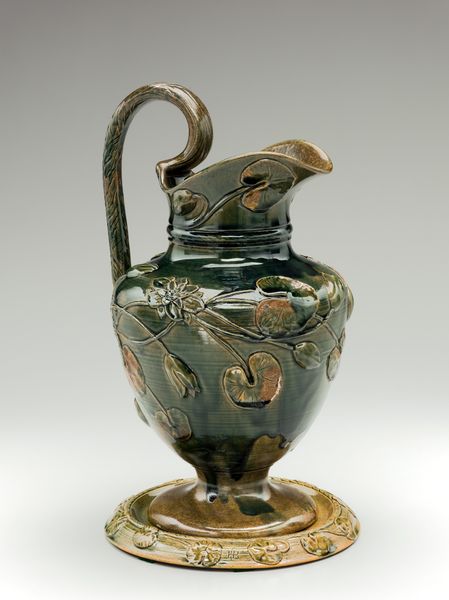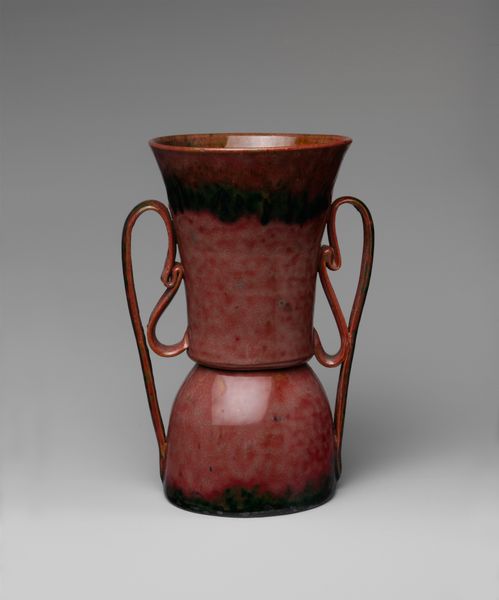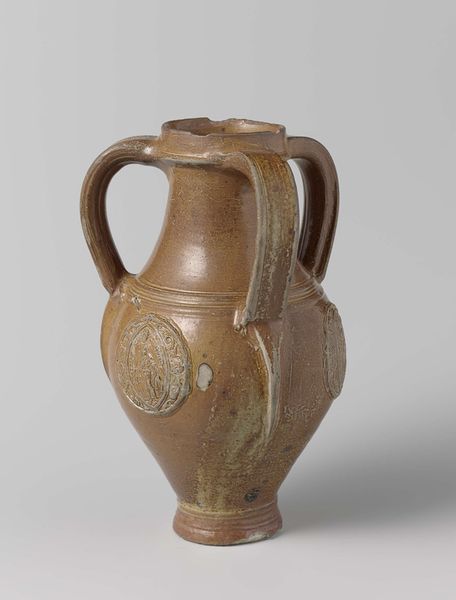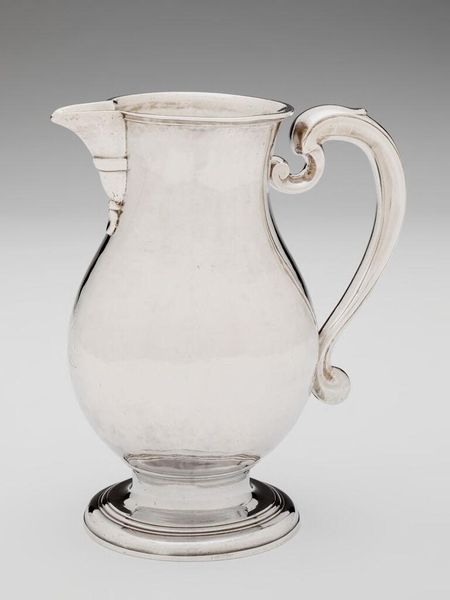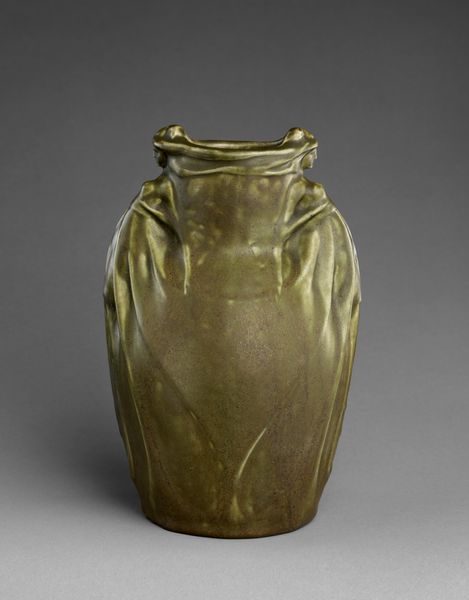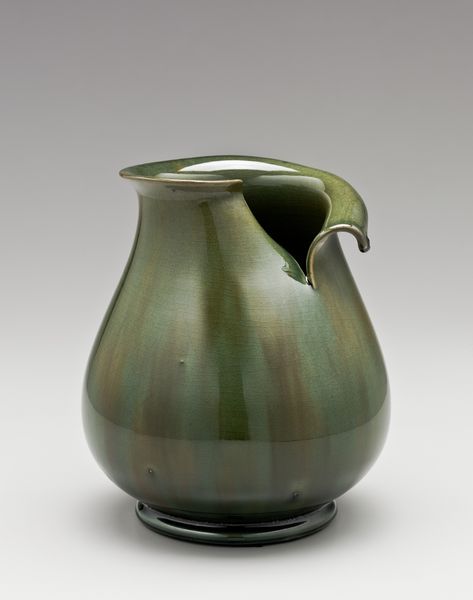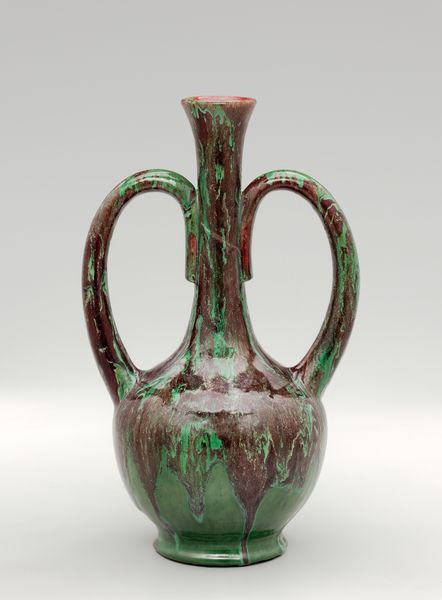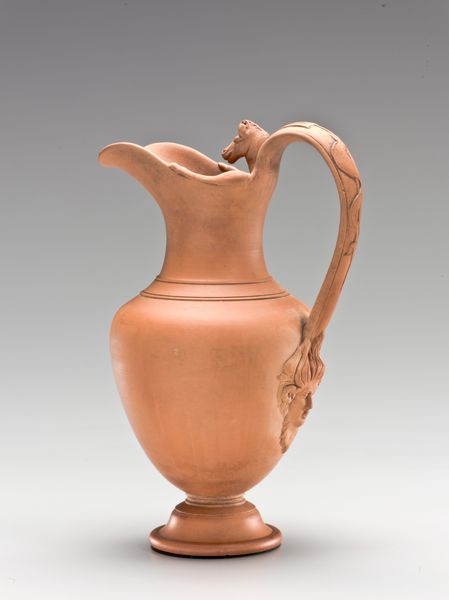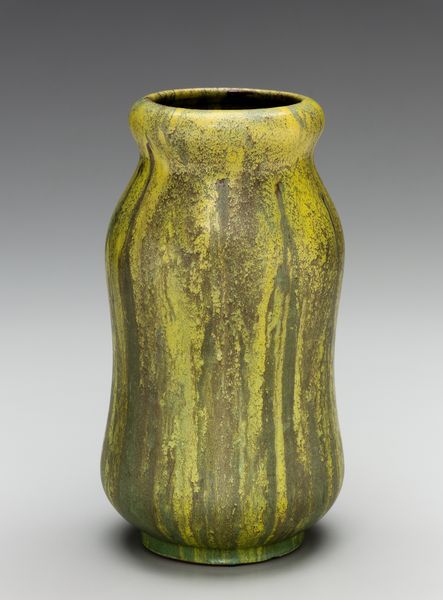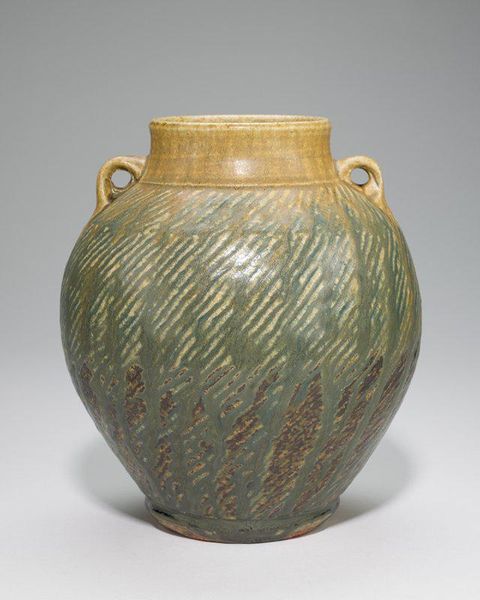
ceramic, earthenware, sculpture
#
greek-and-roman-art
#
ceramic
#
figuration
#
form
#
earthenware
#
stoneware
#
sculpture
#
ceramic
Dimensions: 12 1/8 in. (30.8 cm)
Copyright: Public Domain
Curator: Standing before us is an earthenware vase crafted by William J. Walley sometime between 1893 and 1903. It is aptly titled "Vase with Satyr-head handles." Editor: It strikes me immediately as something ancient, yet also subtly menacing. The green glaze gives it an earthy feel, but those satyr heads—are they grinning or grimacing? Curator: The satyr heads are a fascinating allusion, grounding the piece in Greek and Roman traditions while reflecting the American art pottery movement’s engagement with classical forms. It suggests an appropriation and reinterpretation of European aesthetics, fitting within the broader context of American artistic identity formation during the late 19th century. Editor: Absolutely. Satyrs themselves are potent symbols, representing the duality of human nature—part human, part animal. Those expressive satyr heads also serve a functional purpose as handles, so we have this interesting interplay of practicality and symbolic weight. The choice of green too…perhaps suggesting growth or decay? Curator: Given the period, I think we must also consider the societal function of such an object. This vase likely occupied a prominent place within a domestic setting, indicating a cultivated taste. It certainly speaks to the aspirational desires of the late-Victorian middle class to acquire objects that evoked classical learning and refinement. Editor: That context of display is critical. It is almost as if this satyr embodies a certain rebellious spirit caged within polite society. Do you think the relative darkness in the facial area suggests inner-turmoil? Curator: Perhaps. I am more inclined to see it as a nod toward prevailing attitudes. The deliberate craftsmanship in those handles presents a clear assertion about its owner’s socio-economic status, subtly reaffirming a cultural hierarchy. Editor: I like the point about status! And the tension is amazing; these faces are neither comforting nor hostile. There is just this watchful stillness that implies they could shift into either emotional mode, like a coin flip between Dionysian revelry and some unspoken consequence of excess. It is a fascinating little drama. Curator: Indeed, it's a work that continues to prompt dialogue around aesthetics, historical narratives, and socio-political realities, particularly in late 19th century America. Editor: And for me, this object's symbolic tension shows a rich reflection of a society grappling with its own identity.
Comments
No comments
Be the first to comment and join the conversation on the ultimate creative platform.

